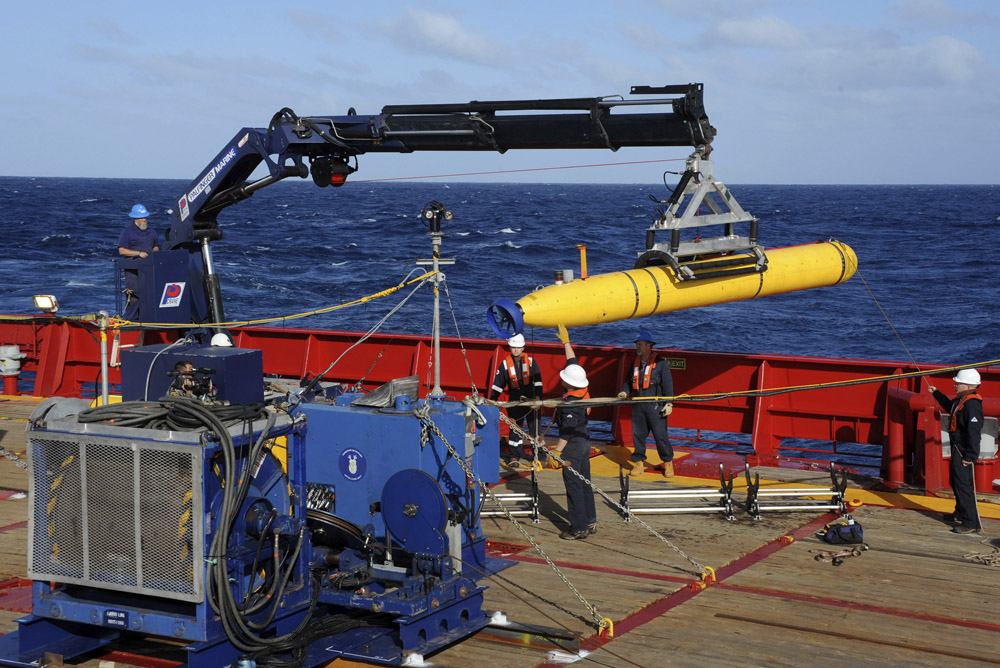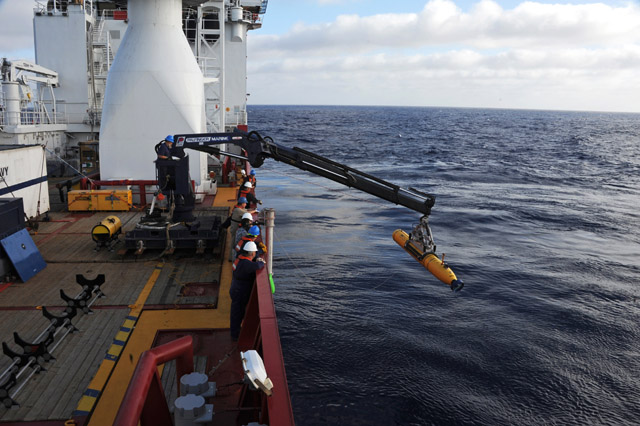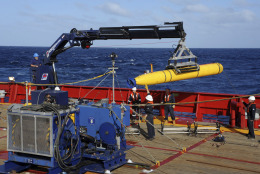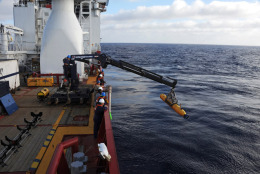



WASHINGTON – A local company and its submarine are scouring the floor of the Indian Ocean for signs of the missing Malaysian plane.
Largo-based Phoenix International sent nine staff members and its Bluefin 21 autonomous underwater vehicle to Australia to help search for the black boxes from Malaysia Airlines 370, says Pete LeHardy with Phoenix.
The Bluefin made its second dive Wednesday in an area where pings from the boxes were heard before their batteries died. The sub is scanning the seafloor with sonar to map a potential debris field.
The search area is so remote not much is known about the conditions on the ocean floor, LeHardy says.
“We’re going to have to learn on the fly,” LeHardy says. “Are there are lot of rocks, is there a lot of crevices, cracks. You need to understand the topography and then think about what the manmade objects would look like in the sonar returns.”
It takes about two hours for the robotic sub, which is not connected to the surface by wires or cables, to travel the 4,500 meters to the ocean floor, he says.
The sub then travels a pre-programmed path and then returns to the surface, where it is hoisted back onto the search ship, its data downloaded and its batteries recharged, he says.
Moving the sub from the choppy water to the deck of the search ship, while the waves rock the Australian’s Ocean Shield vessel and slap at the deck, is the biggest challenge, he says.
LeHardy says the technology has been in use for about a decade and is now employed by the U.S. Navy, which contracts with Phoenix to operate and maintain the Navy’s underwater search and recovery equipment.
The company helped search for the wreckage of Air France Flight 447 and the Space Shuttle Columbia.
Facts about Bluefin
- The submarine can search about 8 square miles during a 20-hour dive
- It would take four days to search an area the size of Manhattan
- The robotic sub is pre-programed for the depth and route it will travel
- The sub can reach depths of 4,500 meters, allowing it to reach most of the Indian Ocean floor
Follow @WTOP on Twitter and on Facebook.







